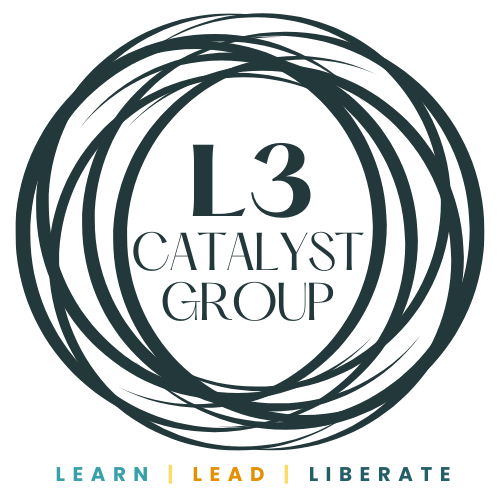Have you drafted a beautiful change process, rolled it out energetically, and wondered why it wasn't HAPPENING?
Moving From Vision to Mobilization isn't easy, but it is possible.
In our previous post (1 of 3), Practice Change Instead of Drowning in It, we shared how Kotter’s first three steps—urgency, coalition-building, and identifying a strategic vision—lay the groundwork for transformational equity-centered change.
But vision alone isn’t enough. Without communicating the vision for buy-in and empower broad-based action, it’s just a beautiful dream. Steps 4 and 5 in Kotter’s model move us from alignment to activation. Let’s break them down here in part 2 of our 3-part series on Dr. Kotter's Eight Step Process for Leading Change.
Step 4: Communicate the Vision for Buy-in
You don’t need to convince everyone to move forward—but you do need a critical mass. Kotter (2018) suggests just 15% of people engaging with energy and choice can create enough momentum to shift culture.
Creating a vision for transformation is strongest when it's:
Simple: No techno babble or jargon.
Vivid: A verbal picture is worth a thousand words – use metaphor, analogy, and example.
Repeatable: Ideas should be able to be spread by anyone to anyone.
Invitational: Two-way communication is always more powerful than one-way communication. (RSB Group)

In liberatory leadership, we’re not forcing compliance—we’re cultivating voluntary ownership and connection.
-
Create space for people to opt in, not just be assigned
-
Recognize early adopters publicly and authentically
-
Share stories of impact to recruit more hearts and minds
- Make changes to the plan based on wise feedback from those closest to the challenge.
This isn’t about recruiting warm bodies for a task force. It’s about building a network of courage admidst the fear that activates change across formal and informal power structures.
“Give people a reason and motivation to join the movement… a strong vision goes a long way.” (Kotter, 2018, p. 21)
Step 5: Empowering Broad-Based Action
How many equity initiatives die because of invisible roadblocks?
According to Kotter, even when leaders acknowledge it, their internal, organizational systems are often too bureaucratic to support change (2018, p. 22). And in equity work, barriers aren’t just red tape—they’re legacies of oppression embedded in norms, language, policies, and habits.
To remove barriers, we help leaders:
-
Examine which processes protect power or uphold exclusion
-
Identify rules or cultural norms that silence marginalized voices
-
Ask: Who benefits from how we’ve always done things?
This is where equity work becomes both strategic and structural. It’s not just about new ideas—it’s about clearing the path so those ideas can live and grow.
“Innovation is less about generating new ideas and more about knocking down the barriers to making those ideas a reality.” (Kotter, 2014)
From Buy-In to Breakthrough
Equity and change leadership aren't just the work of one team or the executive suite. It's a whole-organization movement that takes constant development and focus. But movement doesn’t happen without a clearly communicated vision, and broad-based momentum—and momentum doesn’t happen without removing what gets in the way.
And people are afraid now...particularly now. How are you holding space for yourself and for your team(s)?
This is where good intentions become real transformation.
In our next (and final) post in this series, we’ll explore how to sustain the work and anchor equity into your culture for the long haul—steps 6 through 8: (6) Generating Short-Term Wins, (7) Don't Let Up, and (8) Make it Stick.
Until then, spend some time considering these questions:
- Are we truly aligned to our vision? How do we communicate our commitment? Is it simple, vivid, repeatable, and invitational?
- How are leaders removing barriers instead of adding more? What organizational barriers are we/leaders not open to hearing? Why?
- How can we have the difficult, crucial, and brave conversations to face the barriers and move past them?
Let’s build together.
Fellow leaders and learners, I wish you courage, rest, and Beloved Community for the journey. Together we catalyze a brave, bold, and liberatory future.
.png?width=116&height=58&name=Dee%20(1).png)

September 18, 2025






Comments